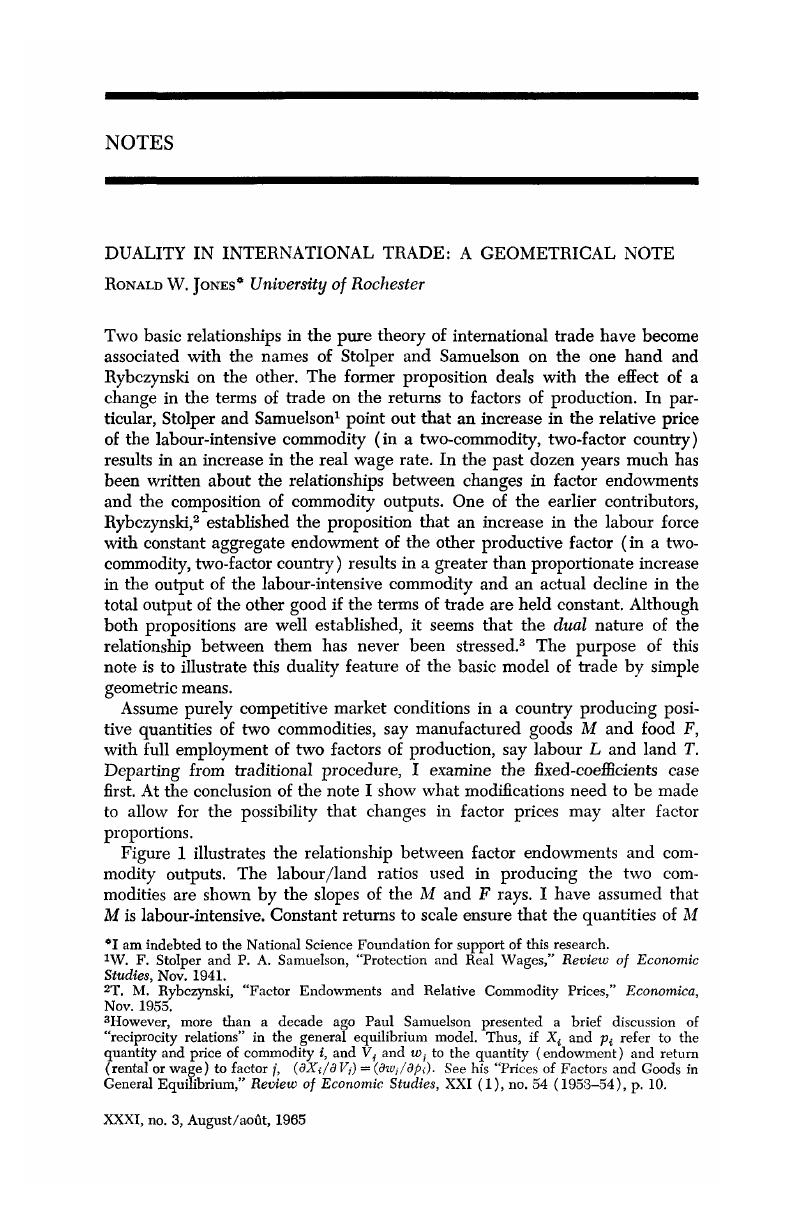Published online by Cambridge University Press: 07 November 2014

1 Stolper, W. F. and Samuelson, P. A., “Protection and Real Wages,” Review of Economic Studies, 11 1941.Google Scholar
2 Rybczynski, T. M., “Factor Endowments and Relative Commodity Prices,” Economica, 11 1955.Google Scholar
3 However, more than a decade ago Paul Samuelson presented a brief discussion of “reciprocity relations” in the general equilibrium model. Thus, if Xi and pi refer to the quantity and price of commodity i, and Vi and wi to the quantity (endowment) and return (rental or wage) to factor i, (∂Xi/∂Vi) = (∂Wi/∂pi ). See his “Prices of Factors and Goods in General Equilibrium,” Review of Economic Studies, XXI (1), no. 54 (1953–1954), p. 10.Google Scholar
4 For the significance of this remark in the theory of trade, see R. W. Jones, “Factor Proportions and the Heckscher-Ohlin Theorem,” ibid., Oct. 1956.
5 The box is formed by joining E with perpendiculars to the axes. Proofs and extensions of the Rybczynski Theorem have used the box diagram. For example, see Guha, A., “Factor and Commodity Prices in an Expanding Economy,” Quarterly Journal of Economics, 02 1963 Google Scholar; Amano, A., “Factor Endowment and Relative Prices: A Generalization of Rybczynski's Theorem,” Economica, 11 1963.Google Scholar
6 For any given factor endowments the composition of outputs can vary all along the transformation curve, given an appropriate change in the terms of trade.
7 Suppose, instead, that the movement from E to E′ in Figure 1 is associated with an increase in the wage/rent ratio. This would serve to reduce labour inputs and increase land inputs per unit of output in both goods. The M-ray and F-ray both become flatter. That is, the cone formed by these rays “swings” in the direction of the factor endowment point, and the required change in outputs is dampened by the price changes. The increase in T is absorbed, in part, by more intensive land use in each industry.
8 This depends, inter alia, on the relative values of elasticities of substitution in each industry.
9 See Samuelson, P. A., Foundations of Economic Analysis (Cambridge, Mass., 1947), 34–5.Google Scholar
10 A more complete algebraic treatment of this and other duality features of the two sector model is contained in R. W. Jones, “The Structure of Simple General Equilibrium Models,” unpublished manuscript.